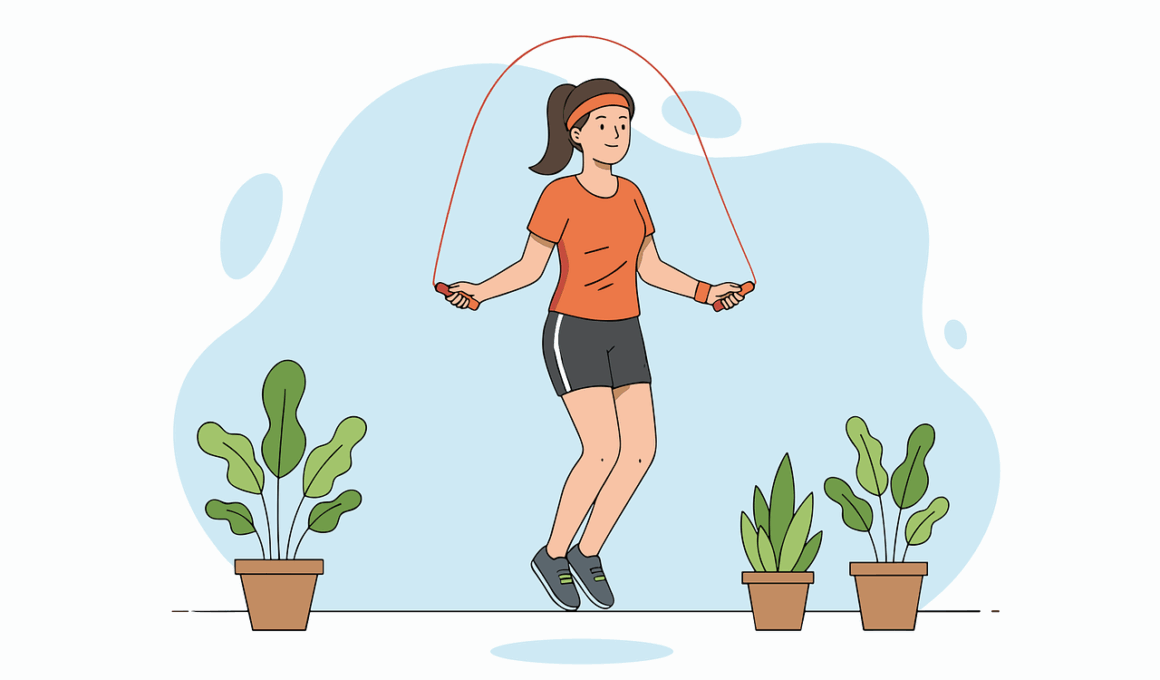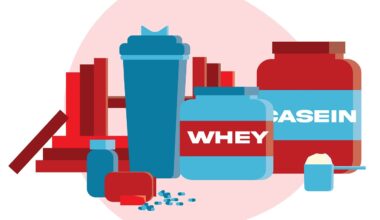Understanding the Importance of Warming Up
Warming up before your kettlebell workout is crucial for preparing your body for the upcoming physical demands. It not only enhances blood flow to your muscles, but it also increases the temperature of your body and prepares your heart for exercise. This process can decrease the risk of injury significantly and improve your overall workout performance. Common warm-ups include dynamic stretches that mimic the movements performed in kettlebell training, such as arm circles, leg swings, and torso twists. Incorporating these movements helps to activate the muscle groups you will be using. It’s advisable to start with a light aerobic activity, like jogging in place, for about five to ten minutes. You can follow this up with specific kettlebell movements performed without weights to get your joints used to the motion. Additionally, ensure to include mobility exercises focuses on your hips, shoulders, and ankles. Elevating your heart rate and enhancing flexibility prepares your body physically, ensuring that you’re ready to lift effectively. Thus a proper warm-up not only protects you but also optimizes your kettlebell training experience.
Cool Down: The Missing Link in Workouts
Cooling down after your kettlebell session is as critical as warming up. It plays a vital role in recovering your body, gradually bringing your heart rate back to its resting level. A proper cool-down helps to prevent dizziness and faintness, which can occur when a sudden stop is made post-exercise. Include gentle static stretches focusing on all the major muscle groups, especially those heavily worked during your session. Stretching improves flexibility and can help with muscle soreness, enhancing your overall mobility. Spend at least ten minutes gradually decreasing your intensity, reflecting on your workout while breathing deeply. Consider integrating foam rolling as part of your cool down routine; this can aid in muscle recovery and alleviate tightness. Rehydration is equally important; replenishing fluids lost during exercise can help maintain performance levels for your next workout. Ensure to maintain a balanced intake of electrolytes as well. Incorporating proper cool-down techniques can lead to longer-lasting benefits from your kettlebell training. Feeling refreshed and prepared for your following session is an ideal outcome, encouraging consistency in your fitness journey.
Essential Warm-Up Exercises for Kettlebell Training
When preparing for kettlebell workouts, select specific warm-up exercises targeting the muscles you will engage throughout your session. A well-structured routine can facilitate optimal performance and reduce injury risks. Start with some joint rotations, focusing on shoulders, hips, and wrists. These prepare your joints for the specific movements you will execute. Move on to perform dynamic stretches, like leg swings and walking lunges with a twist, as they mimic functional patterns. High knees or butt-kickers are excellent activities that engage your core and lower body. Incorporate kettlebell-specific movements such as the hip hinge or bodyweight squats to activate the muscles. It’s essential to keep the movements controlled and gradually increase the intensity. Lastly, finish your warm-up with a few reps of light kettlebell swings or deadlifts without excessive weights to ensure your body is fully prepared. Each of these exercises serves to elevate your heart rate and enhance muscle elasticity, making you ready to tackle weights effectively. In doing so, you’ll better perform exercises and maximize the effectiveness of your kettlebell training sessions.
Implementing an Effective Cool Down Routine
Establishing a reliable cool-down routine post-kettlebell workouts is fundamental for muscle recovery and long-term progress. Start with a few minutes of walking or slow-paced movement to gradually lower your heart rate. Following this, incorporate stretched muscle groups worked during the session, focusing on holding each stretch for at least 20 to 30 seconds. Areas like the hamstrings, quads, and shoulders often require special attention due to the exertions placed on them during kettlebell exercises. Other valuable techniques include incorporating mobility drills to enhance the range of motion. Static stretches can be done seated on the ground, reaching toward your toes for hamstring stretches, or using a wall-assisted shoulder stretch. Listen to your body during the cool-down phase; it’s essential to address any tight areas and ease them through gentle movements. Consider journaling about how each session feels; this feedback can help fine-tune future workouts. Remember, while kettlebell training is intense, ensuring adequate recovery and cool-down phases can lead to enhanced overall performance and strength gains long-term.
Benefits of a Structured Warm-Up
A structured warm-up routine is not merely a suggestion but a necessity in kettlebell training. As you engage in targeted exercises, you set the stage for effective physical activity. Effective warm-ups lead to better blood circulation, increase muscle elasticity, and enhance overall joint mobility. These factors are significant for optimal exercise performance, especially when utilizing heavy kettlebells. Besides preventing injuries, warm-ups prime your body and mind; it cultivates focus and readiness to engage fully in your workout. Mentally, warming up allows you to shift gears, providing an improved psychological state to tackle challenges. Furthermore, warm-ups act as a rehearsal for the precise mechanics of the kettlebell exercises you’re about to perform, reinforcing muscle memory. As you transition into heavier weights and more complex maneuvers, your body will be better equipped to manage forces effectively. Consider routine assessments of your warm-up exercises to determine what works best for you over time. This adaptability within your warm-up can lead to continuous improvement in performance and enjoyment while kettlebell training.
The Role of Breathing During Cool Down
Breathing techniques play a crucial role in the cool-down process after your kettlebell workouts. While you may not consider it immediately, controlled breathing helps facilitate recovery more efficiently. By practicing deep, diaphragmatic breathing, you can enhance oxygen delivery to recovering muscles, thus promoting a faster recovery. Focus on inhaling deeply through your nose and exhaling through your mouth. Repeat this cycle vigilantly as you stretch or perform mobility exercises. Establishing a rhythm in your breathing can also help to lower your heart rate calming the nervous system. Pay attention to how breath interacts with static stretching; it’s essential that you synchronize your breath with each stretch, inhaling as you prepare to move into the stretch, and exhaling as you deepen into it. The connection between breath and physical movement is significant for relaxation and bodily awareness. Make a habit of including focused breathing in your cool-down routine, as it complements your recovery strategy and strengthens your mental control during kettlebell training. This mindfulness approach can further enhance the overall quality of each session significantly.
Final Reflections on Warming Up and Cooling Down
In conclusion, never underestimate the value of warming up and cooling down for home kettlebell workouts. Both are essential components of a holistic training approach that significantly contributes to the quality of our sessions. Committing to these practices not only helps to prevent injuries but also maximizes workout performance and promotes muscle recovery. Integrating both activities firmly into your exercise routine can yield remarkable long-term benefits. As you evolve in your kettlebell journey, remember to tailor your warm-up and cool-down activities; adapting them to suit your individual needs and progress can ensure optimal results. Take time to evaluate what works and continuously refine your routine based on performance feedback. Recognize that embracing these strategies is not just beneficial but vital to sustaining a long-term relationship with fitness and overall well-being. Ultimately, achieving your fitness goals will become more manageable when you prioritize these essential session components. A thoughtful approach to warming up and cooling down today will pave the way for success in your kettlebell training tomorrow.
Optimal Equipment and Space for Kettlebell Training Sessions
When embarking on a kettlebell training journey, selecting the appropriate equipment and creating the right training space is essential. Invest in high-quality kettlebells, ensuring they are of adequate weight to challenge you while allowing for proper form. Adjustable kettlebells may be good options as they provide versatility, allowing for an increase in weight as you progress. Ensure that your training area is spacious enough to allow free movement; this can prevent injuries caused by accidentally colliding with furniture or walls. A flat surface that supports your practice is essential, as is adequate flooring that can absorb impact and prevent slipping. Consider using a yoga mat or exercise mat for comfort while executing floor-based movements. Additionally, having access to fitness tracking devices can help monitor your performance and track your improvements effectively. Always ensure that the kettlebell is within reach during your workout to maintain momentum. Establishing an organized workout space will foster a more focused training environment, enabling you to concentrate on your kettlebell techniques efficiently. All these elements together create a supportive framework fostering effective kettlebell training.


